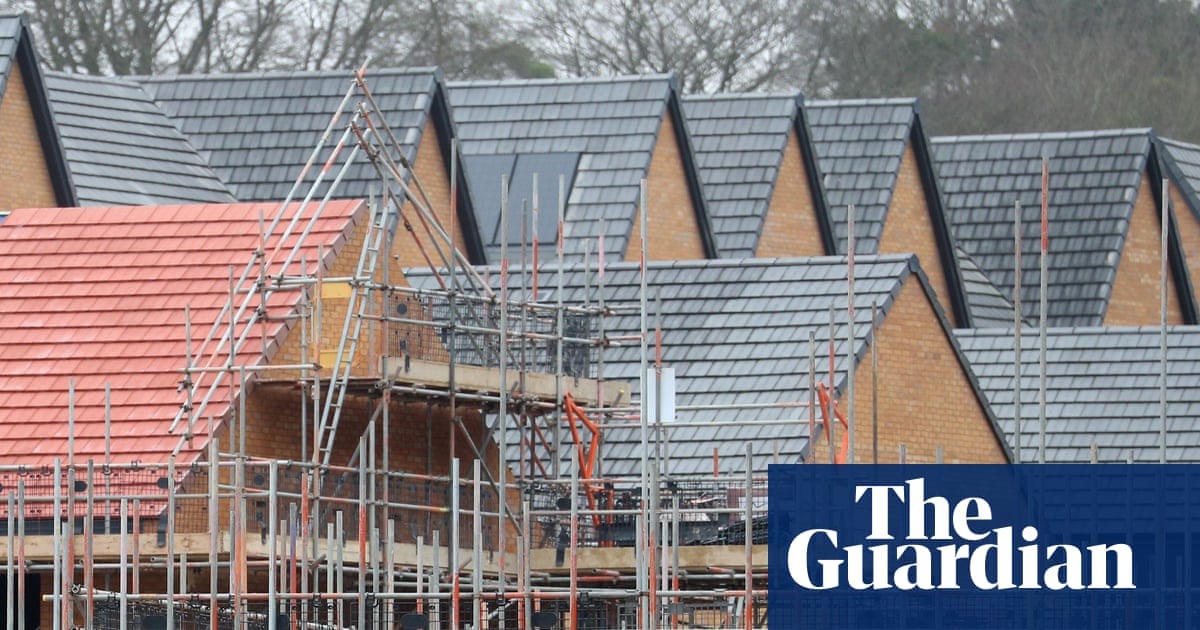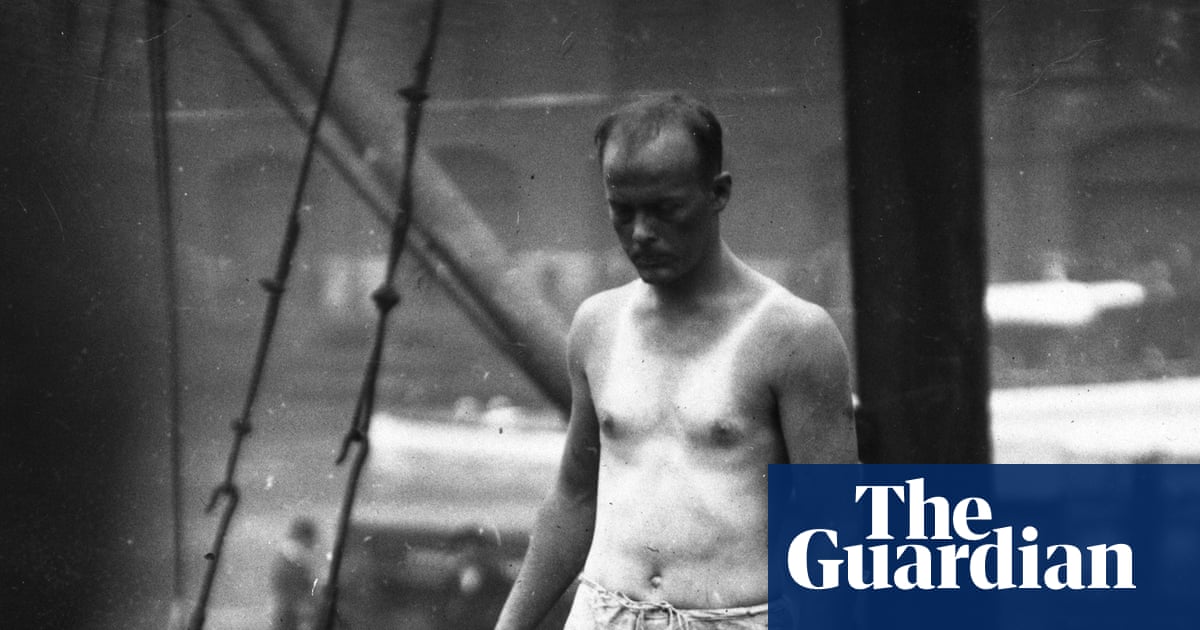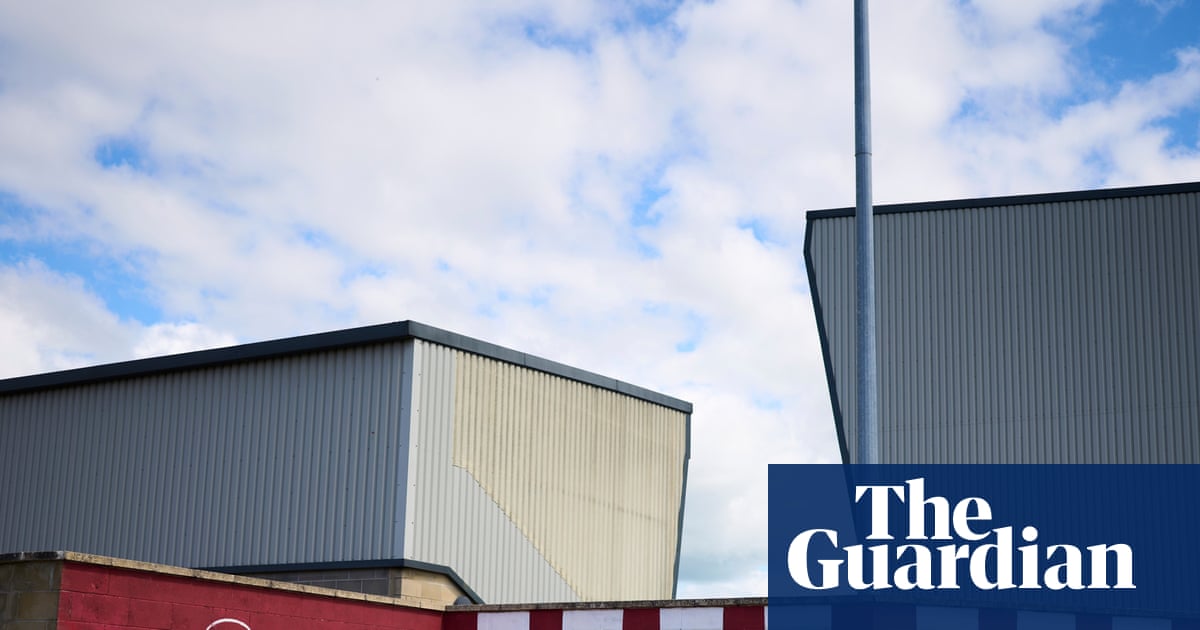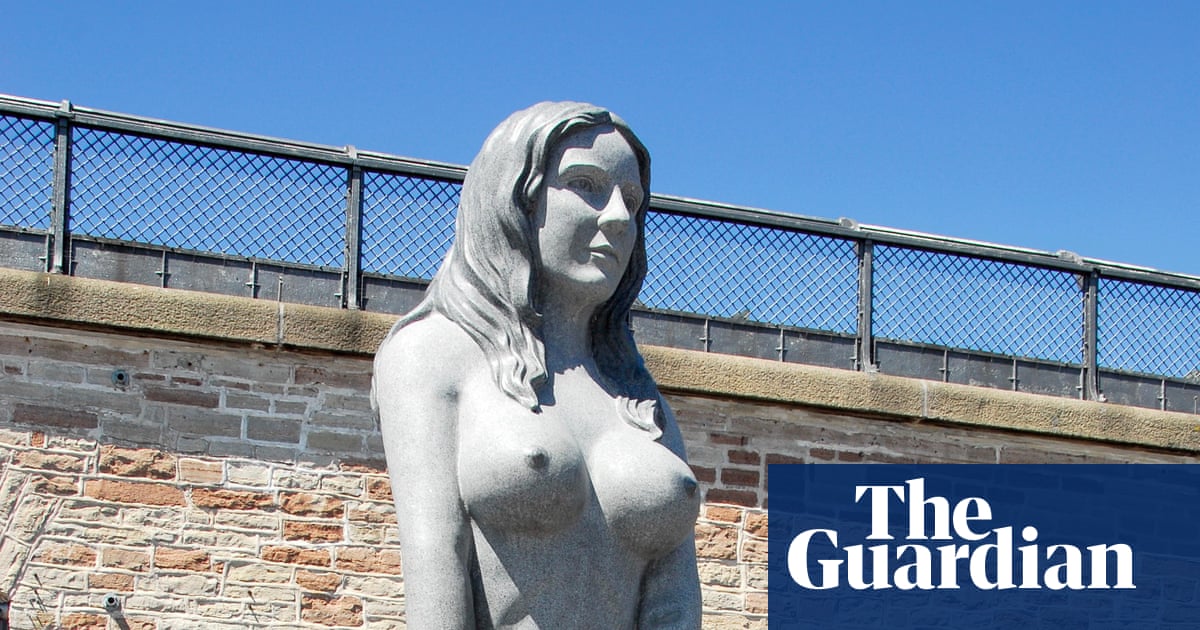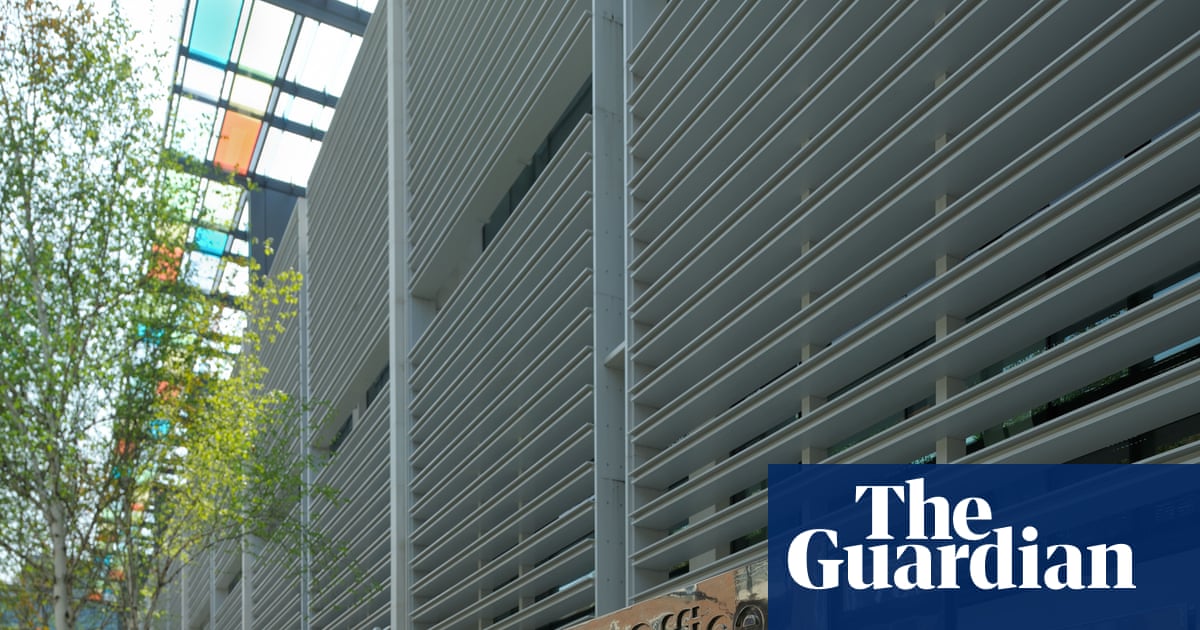“Sir, why are you up on the roof?”
The question was shouted by a reporter on Tuesday as Donald Trump scaled new heights at the White House. The US president explained that he was scoping out a new ballroom and boasted: “Just another way to spend my money for this country.”
It emerged last week that Trump, who made his money in the New York construction industry, intends to build an enormous $200m ballroom for hosting official receptions, one of the biggest projects at the White House in more than a century.
This will be just the latest step in a radical architectural overhaul intent on making the 225-year-old executive mansion less redolent of stuffy Washington and more evocative of Mar-a-Lago, his gaudy palace in Palm Beach, Florida.
Trump has revamped the Oval Office by splashing the room in gold, from the stars surrounding the presidential seal on the ceiling to gold statues on the fireplace to the mantel itself. He crowded its walls with numerous portraits, while just outside the office is a framed photo of Trump’s mugshot as featured on the cover of a New York tabloid newspaper.

Outside, Trump has erected a pair of towering flagpoles that fly the stars and stripes, paved over a grassy patch of the Rose Garden and, he told NBC News, intends to replace what he said was a “terribly” remodeled bathroom in the Lincoln Bedroom with one that is closer in style to the 19th century.
But his most ambitious architectural gambit will be the new ballroom, which officials say he and unspecified donors will pay for himself, designed to host grand state dinners, given in honour of foreign leaders visiting Washington. Until now, these were generally done by erecting a huge tent on the White House grounds.
“When it rains or snows, it’s a disaster,” Trump said in his NBC interview, bemoaning how the tents are stationed “a football field away from the White House”.
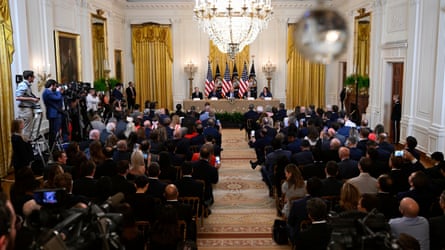
Whereas the East Room, currently the biggest room in the White House, can accommodate about 200 people, the new structure will span more than 8,000 sq metres (90,000 sq ft) and have space to seat 650 people. Work will begin in September and is expected to be completed before the end of Trump’s second term in January 2029.
A model of the ballroom presented by the government shows it will be a white building with tall windows reminiscent of the main White House building. It will replace the east wing, which usually houses the offices of the first lady, and it remains unclear where they will be relocated.
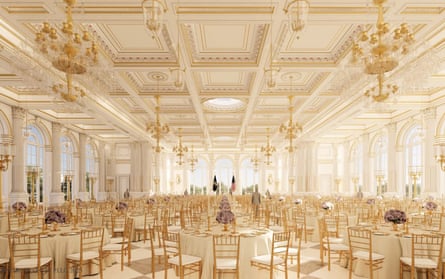
Trump told reporters last week: “They’ve wanted a ballroom at the White House for more than 150 years, but there’s never been a president that was good at ballrooms. I’m good at building things and we’re going to build quickly and on time. It’ll be beautiful, top, top of the line.”
He added: “It’ll be near it but not touching it and pays total respect to the existing building, which I’m the biggest fan of. It’s my favourite. It’s my favourite place. I love it.”
after newsletter promotion
Democrats are sceptical, however. Chuck Schumer, the party’s minority leader in the Senate, told a press briefing: “Listen, I’m happy to eat my cheeseburger at my desk. I don’t need a $200m ballroom to eat it in. OK?”
Others regard Trump’s transformation of the White House as a dark metaphor for his approach to US democracy. Mona Charen, policy editor of the Bulwark website, wrote this week: “Trump is a walking wrecking ball of law, tradition, civility, manners, and morals. Many visitors to the nation’s capital won’t know or understand much of that damage.
“But starting now with the paving of the Rose Garden, and coming soon with the construction of a garish ballroom, they will see a physical representation of a low and shameful time. The once graceful executive mansion will be transformed into something tasteless and embarrassing. It will be both awful and fitting.”
The ballroom is shaping up to be one of the most significant to break ground at 1600 Pennsylvania Avenue since renovation and expansion works undertaken by Theodore Roosevelt at the start of the 20th century. Harry Truman also oversaw sweeping construction work between 1948 and 1952 including gutting the main building and adding the Truman Balcony.
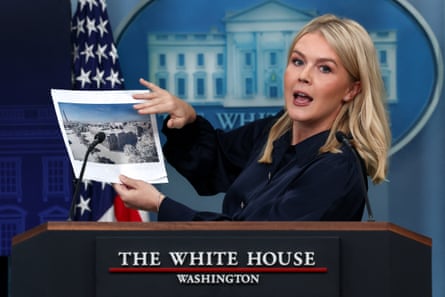
Truman drew his share of criticism at the time. Stewart McLaurin, president of the White House Historical Association, wrote in a recent essay published on LinkedIn: “Preservationists mourned the loss of original interiors, while media outlets questioned the project’s cost during post-war economic recovery.”
Subsequent presidents have overseen facelifts, refreshes and renovations. Anita McBride, who was chief of staff to first lady Laura Bush, recalled on Wednesday: “Mrs Bush transformed every single room in the residence. The largest restoration of any room in the White House is the Lincoln Bedroom, done under her tenure. She helped to oversee the the redo of the White House theatre; the way that she designed it is the way it still looks to this day.”
McBride acknowledged that Trump, a longtime property developer, is more engaged in remodelling the White House than many of his predecessors. “He’s certainly paying attention to things at the White House that he feels would be improvements for the occupants, not just him but those that come after him. Maybe it’s his background that lends itself to having a keen eye to enhancements.
“This is the largest transformation we have seen since the Truman renovation when it needed improvement and to be structurally sound. President Truman took such criticism for wanting to add the balcony and you cannot imagine the White House without that balcony now.”

 3 months ago
84
3 months ago
84



